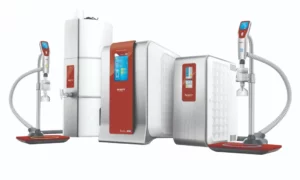It can seem strange to think back to just how deadly automobiles were in the days before Ralph Nader’s now famous book “Unsafe at Any Speed” hit the shelves in 1965. The aftermath of that groundbreaking tome led to the creation of the National Highway Traffic Safety Administration (NHTSA) and substantial changes by automotive manufacturers who helped fill the “gap between existing design and attainable safety” that Nader claimed they had failed to achieve.
The list of life-saving car safety innovations over the years by car manufacturers is extensive and will help you if your vehicle has sustained any damages. Some of the most notable changes include:
- Shatter-resistant glass
- Anti-lock brakes
- Four-wheel steering
- Collapsible steering wheels
- Airbags
- Seatbelts
- Improved lighting
- Better positioned mirrors
Each of these innovations has saved lives individually and working in concert with each other. Despite these technology improvements along with increased funding for distracted driving and drunk driving awareness campaigns and more comprehensive driving test resources, automobile accidents are still a major cause of death. Well over 30,000 people lose their lives each year behind the wheel in the United States alone. While these numbers may seem high, they are down substantially from the 1960s and 1970s when fatalities reached as high as 54,589 in 1972.
So, while great strides have been made, there is still a lot of room to improve in terms of automobile safety. Let’s take a look at some of the newest technologies car manufacturers are using to make our roads even safer.
Pedestrian detection systems
Nearly 6,000 pedestrians died after being struck by automobiles in 2017. Another 130,000+ were treated for injuries. Clearly, we need to find ways to keep moving cars from encountering so many pedestrians. One of the major difficulties drivers have is trying to see pedestrians and cyclists at night and in low visibility situations. To combat this, carmakers have developed specific technologies using infrared light to help provide advanced warning and automatic braking before a collision can occur.
Speed governors
Governing speed isn’t a new technology necessarily, but adaptive speed governing is seen largely as new technology. Mainly utilized in fleet vehicles, the goal of these governors can maximize fuel efficiency and lower insurance costs, but also save the lives of pedestrians. Limiting vehicle speed during crashes with pedestrians can make a massive difference in the survival rate of the pedestrian. A study on vehicle and pedestrian impacts found that at 19 mph 95 percent of pedestrians survive, while that number plummets to 10 percent at a speed of 50 mph. Utilizing speed governors in densely populated areas with high pedestrian traffic could potentially save thousands of lives each year.
360-degree cameras
One of the major pain points for drivers and manufacturers has been trying to eliminate blind spots for drivers. The new technology takes the idea of rear-view cameras a step further by adding more cameras and combining them into a full 360-degree view of your car in relation to its surroundings. While this is extremely helpful for parking, this added visibility can help cut down on high-speed collisions caused by blind spots that occur when changing lanes.
Lane departure alerts
Too many people get behind the wheel while sleepy. This is an unfortunate danger we all have to deal with. In 2017, the NHTSA reported that 795 people were killed in drowsy driving accidents. To combat this, automakers have been adding lane departure alerts to warn drivers when they begin to drift out of their lanes. Of course, no one should ever get behind the wheel when they don’t have enough sleep, but carmakers are doing their best to combat this problem with technology.
Automatic emergency braking systems
You may have seen some commercials touting this new technology already. Automatic braking is yet another technology designed to overcome common driver errors that lead to auto accidents. Typically, these systems are designed to provide an initial warning to the driver to make a corrective action, and if the driver doesn’t respond appropriately, the braking system will activate to either prevent or reduce the severity of the impact.
Talking cars
While this might seem like something out of a sci-fi movie, manufacturers are utilizing the more robust onboard technology in vehicles to allow cars to pass information to one another. Built-in wi-fi can be used to allow cars to share information on speed and direction to help avoid collisions. Toyota has already started making this technology standard in some of their models so it’s likely that other carmakers will soon follow suit and roll this technology into more and more new vehicles.
Intelligent seatbelts
While this is a safety feature many people may take for granted, carmakers have continued to push the envelope on improving seatbelts to make them a more effective tool for driver and passenger safety. Belt monitoring technology, like that, rolled out by Ford in 2019, informs drivers if someone in the back seat unbuckles their belt while the car is in motion. While it’s not legally required in all states, having all passengers buckled up can save lives. The NHTSA estimated that proper seatbelt use saved nearly 15,000 lives in 2017. Utilizing technology to ensure that your children or your passengers stay buckled can help save even more lives in the future.
What else is down the road?
Where the next car safety innovations will come from is anyone’s guess. With the rapid development of self-driving technology, there are a seemingly endless amount of ways that cars can get smarter and reduce the number of opportunities for human error. Of course, how new technologies are received and how quickly they are adopted depends largely on how the public perceives these new technologies. Many drivers love the freedom that driving offers them, and they may not be so keen on technologies like speed governors or other systems that may limit the driver’s complete control of their vehicle. Either way, the arms race continues as carmakers continue to seek out new, creative ways to make for a safer driving experience.



































